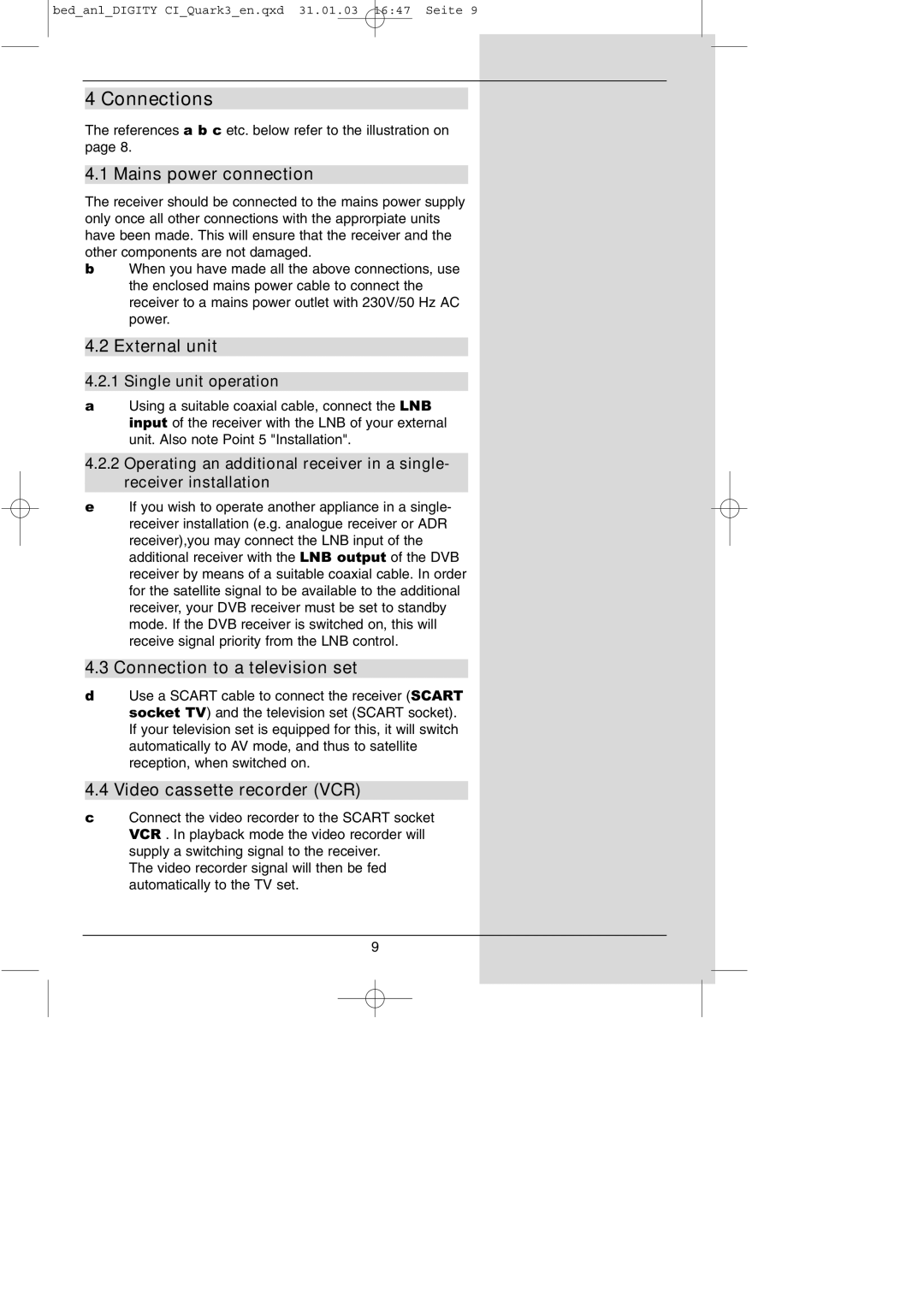
bed_anl_DIGITY CI_Quark3_en.qxd 31.01.03 16:47 Seite 9
4 Connections
The references a b c etc. below refer to the illustration on page 8.
4.1 Mains power connection
The receiver should be connected to the mains power supply only once all other connections with the approrpiate units have been made. This will ensure that the receiver and the other components are not damaged.
bWhen you have made all the above connections, use the enclosed mains power cable to connect the receiver to a mains power outlet with 230V/50 Hz AC power.
4.2 External unit
4.2.1 Single unit operation
aUsing a suitable coaxial cable, connect the LNB input of the receiver with the LNB of your external unit. Also note Point 5 "Installation".
4.2.2Operating an additional receiver in a single- receiver installation
eIf you wish to operate another appliance in a single- receiver installation (e.g. analogue receiver or ADR receiver),you may connect the LNB input of the additional receiver with the LNB output of the DVB receiver by means of a suitable coaxial cable. In order for the satellite signal to be available to the additional receiver, your DVB receiver must be set to standby mode. If the DVB receiver is switched on, this will receive signal priority from the LNB control.
4.3 Connection to a television set
dUse a SCART cable to connect the receiver (SCART socket TV) and the television set (SCART socket). If your television set is equipped for this, it will switch automatically to AV mode, and thus to satellite reception, when switched on.
4.4 Video cassette recorder (VCR)
cConnect the video recorder to the SCART socket VCR . In playback mode the video recorder will supply a switching signal to the receiver.
The video recorder signal will then be fed automatically to the TV set.
9
